Submitted:
24 August 2023
Posted:
25 August 2023
You are already at the latest version
Abstract
Keywords:
1. Introduction
2. Materials and Methods
2.1. Acoustic Filtration Chamber
2.2. Particle Suspension
2.3. Filter Media
2.4. Methodology
2.5. Sample Analysis
3. Results
3.1. Visual Observations
3.2. Development of the Filter Efficiencies over Time
3.3. Final Retentive Filter Efficiency
3.4. Temporal Development of the Retentive Filter Efficiency
3.5. Change in Psd
4. Discussion
4.1. Flotation
4.2. Influence of the Parameters on the Filter Efficiency
4.3. Change in PSD
5. Conclusions
Author Contributions
Funding
Conflicts of Interest
Abbreviations
| ANOVA | Analysis of variance |
| DoE | Design of experiments |
| ppi | Pores per inch |
| PA | Polyamid 12 |
| PAF | Primary acoustic force |
| PSD | Partice size distribution |
| SAF | Secondary acoustic force |
References
- Iyare, P.U.; Ouki, S.K.; Bond, T. Microplastics removal in wastewater treatment plants: a critical review. Environmental Science: Water Research & Technology 2020, 6, 2664–2675. [Google Scholar] [CrossRef]
- Galgani, F.; Fleet, D.; Van Franeker, J.; Katsanevakis, S.; Maes, T.; Mouat, J.; Oosterbaan, L.; Poitou, I.; Hanke, G.; Thompson, R.; Amato, E.; Birkun, A.; Janssen, C. Marine strategy framework directiv - Task Group 10 Report: Marine litter 2010. [CrossRef]
- Ajith, N.; Arumugam, S.; Parthasarathy, S.; Manupoori, S.; Janakiraman, S. Global distribution of microplastics and its impact on marine environment—a review. Environmental Science and Pollution Research 2020, 27, 25970–25986. [Google Scholar] [CrossRef]
- Kleinhenz, S. Filtermaterialien für die FVK-Nasszerspanung/Filter materials for FRP machining – retention rate for filter materials during the wet machining of fiber-reinforced plastics. wt Werkstattstechnik online 2021, 111, 343–348. [Google Scholar] [CrossRef]
- van der Bruggen, B.; Lejon, L.; Vandecasteele, C. Reuse, treatment, and discharge of the concentrate of pressure-driven membrane processes. Environmental science & technology 2003, 37, 3733–3738. [Google Scholar] [CrossRef]
- Zhang, S.; Wang, Y.; Onck, P.; den Toonder, J. A concise review of microfluidic particle manipulation methods. Microfluidics and Nanofluidics 2020, 24. [Google Scholar] [CrossRef]
- Laurell, T.; Petersson, F.; Nilsson, A. Chip integrated strategies for acoustic separation and manipulation of cells and particles. Chemical Society reviews 2007, 36, 492–506. [Google Scholar] [CrossRef] [PubMed]
- Bruus, H. Acoustofluidics 7: The acoustic radiation force on small particles. Lab on a chip 2012, 12, 1014–1021. [Google Scholar] [CrossRef] [PubMed]
- Apfel, R.E. Acoustically induced square law forces and some speculations about gravitation. American Journal of Physics 1988, 56, 726–729. [Google Scholar] [CrossRef]
- Gupta, S.; Feke, D.L. Acoustically driven collection of suspended particles within porous media. Ultrasonics 1997, 35, 131–139. [Google Scholar] [CrossRef]
- Gupta, S.; Feke, D.L. Filtration of particulate suspensions in acoustically driven porous media. AIChE Journal 1998, 44, 1005–1014. [Google Scholar] [CrossRef]
- Grossner, M.T.; Feke, D.L.; Belovich, J.M. Single-collector experiments and modeling of acoustically aided mesh filtration. AIChE Journal 2005, 51, 1590–1598. [Google Scholar] [CrossRef]
- Wang, Z.; Grabenstetter, P.; Feke, D.L.; Belovich, J.M. Retention and viability characteristics of mammalian cells in an acoustically driven polymer mesh. Biotechnology progress 2004, 20, 384–387. [Google Scholar] [CrossRef] [PubMed]
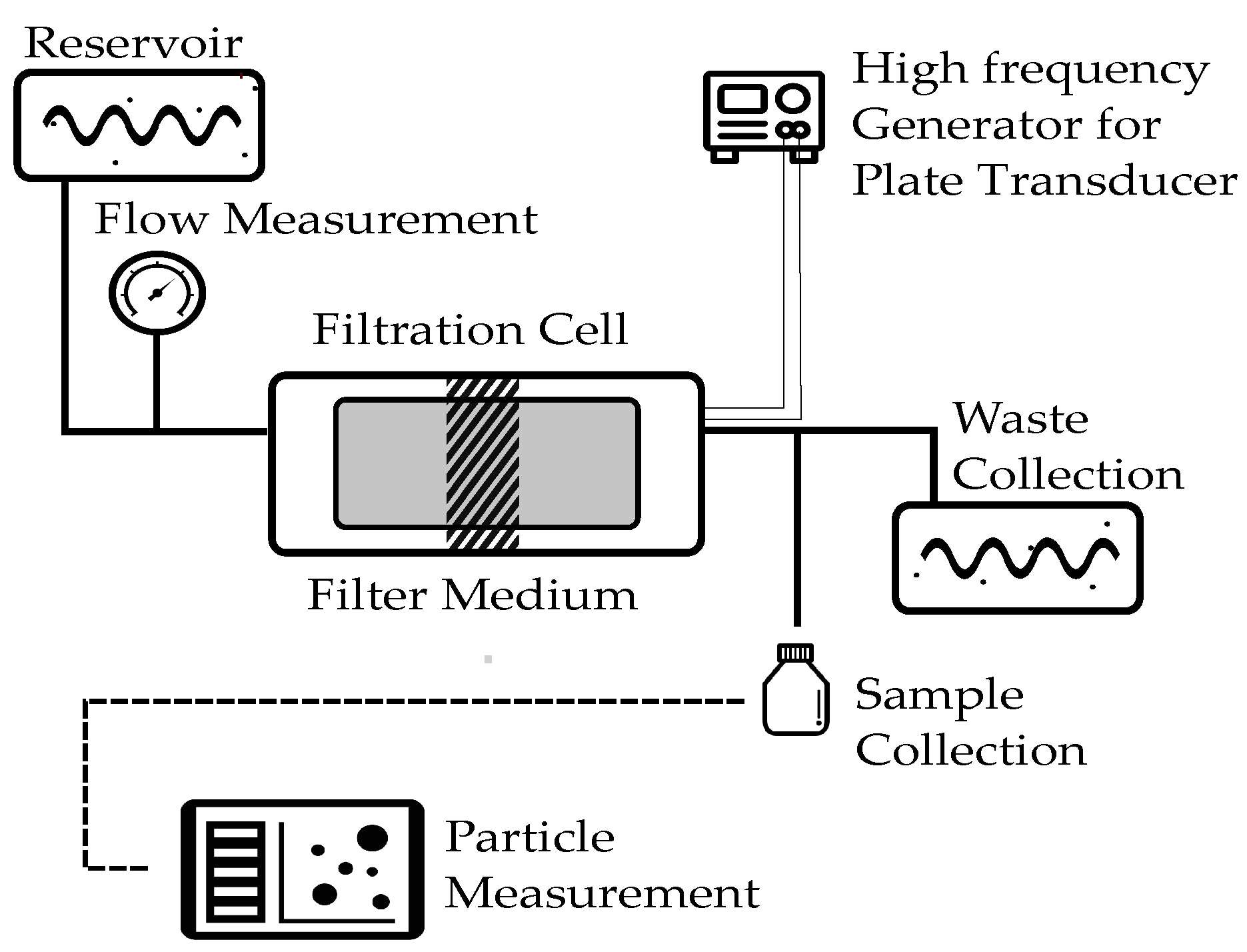
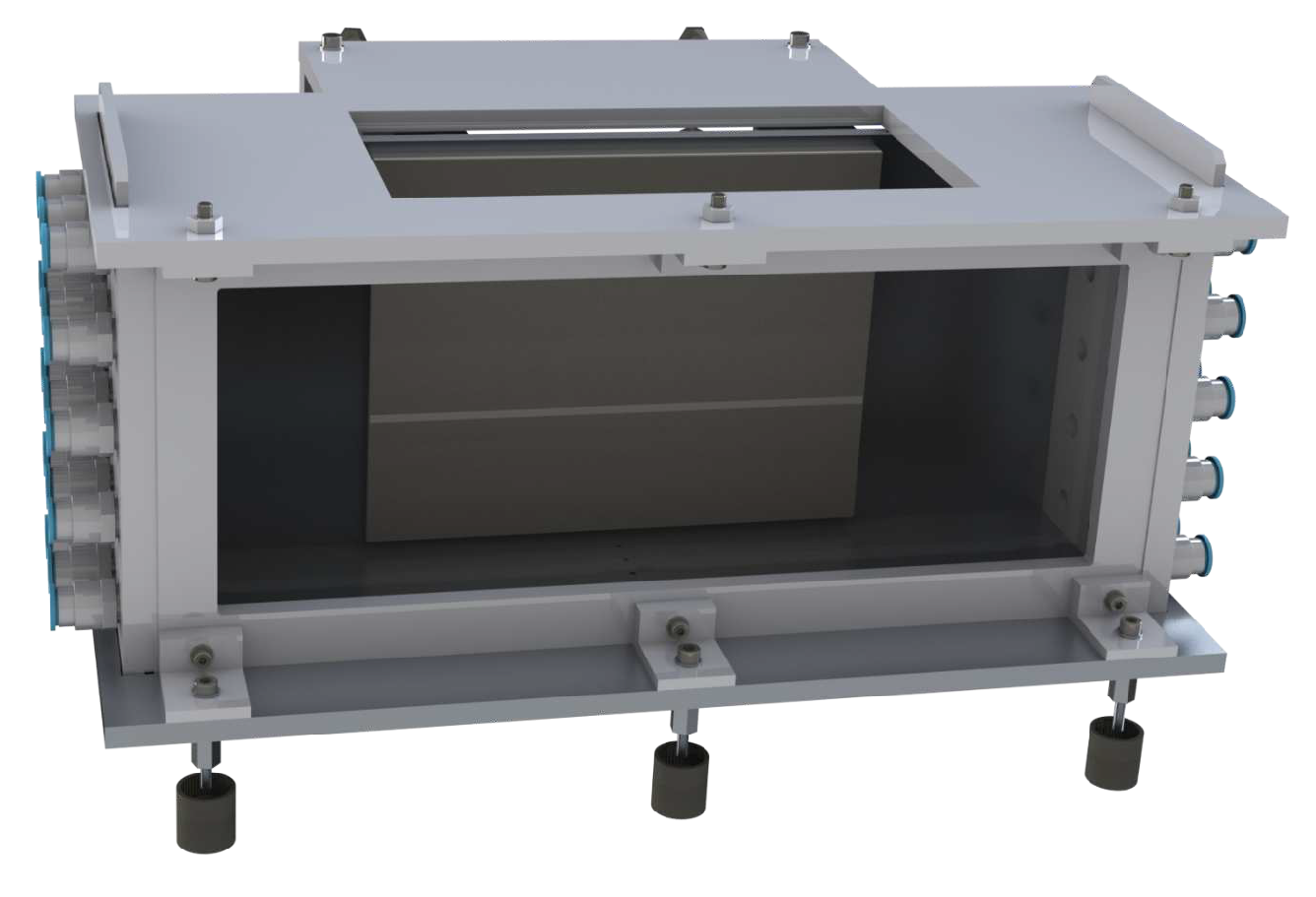
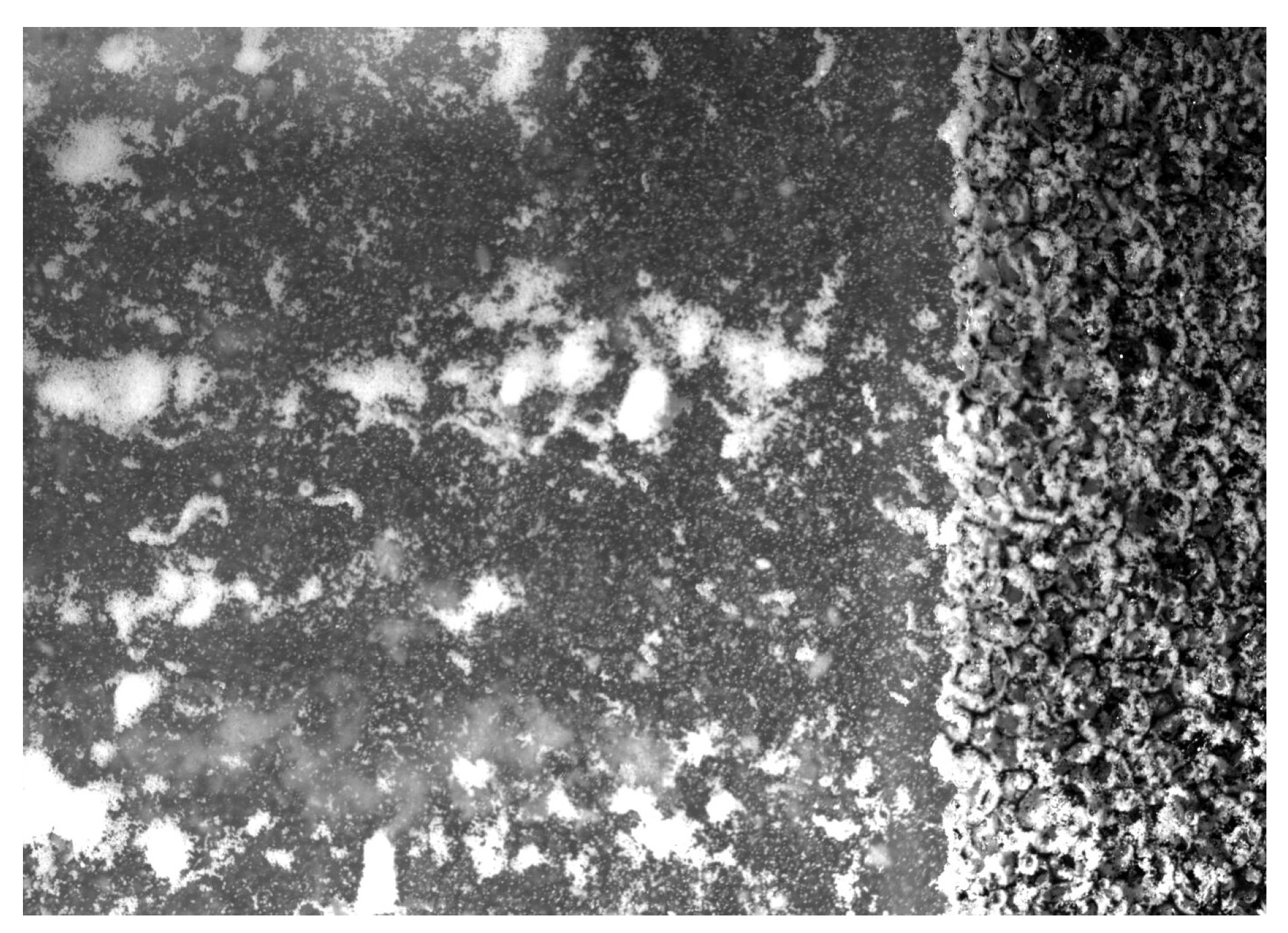
 ), 10% (
), 10% ( ) and 30% (
) and 30% ( )
)
 ), 10% (
), 10% ( ) and 30% (
) and 30% ( )
)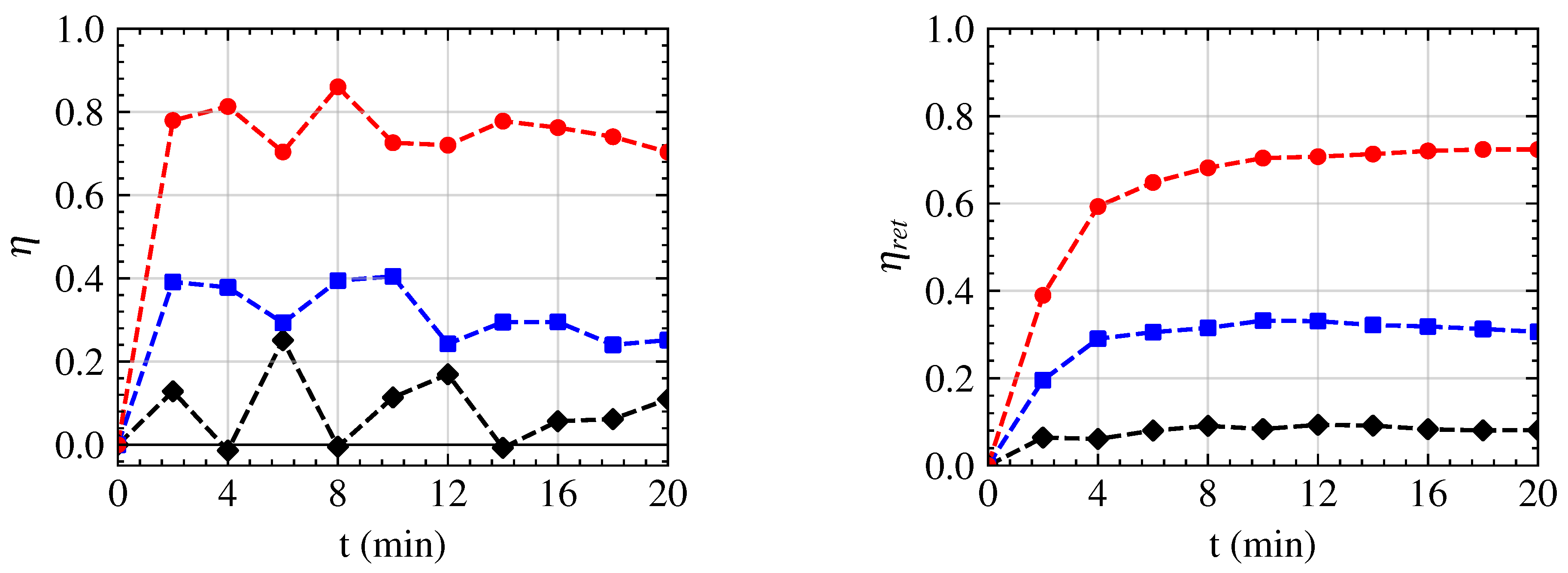
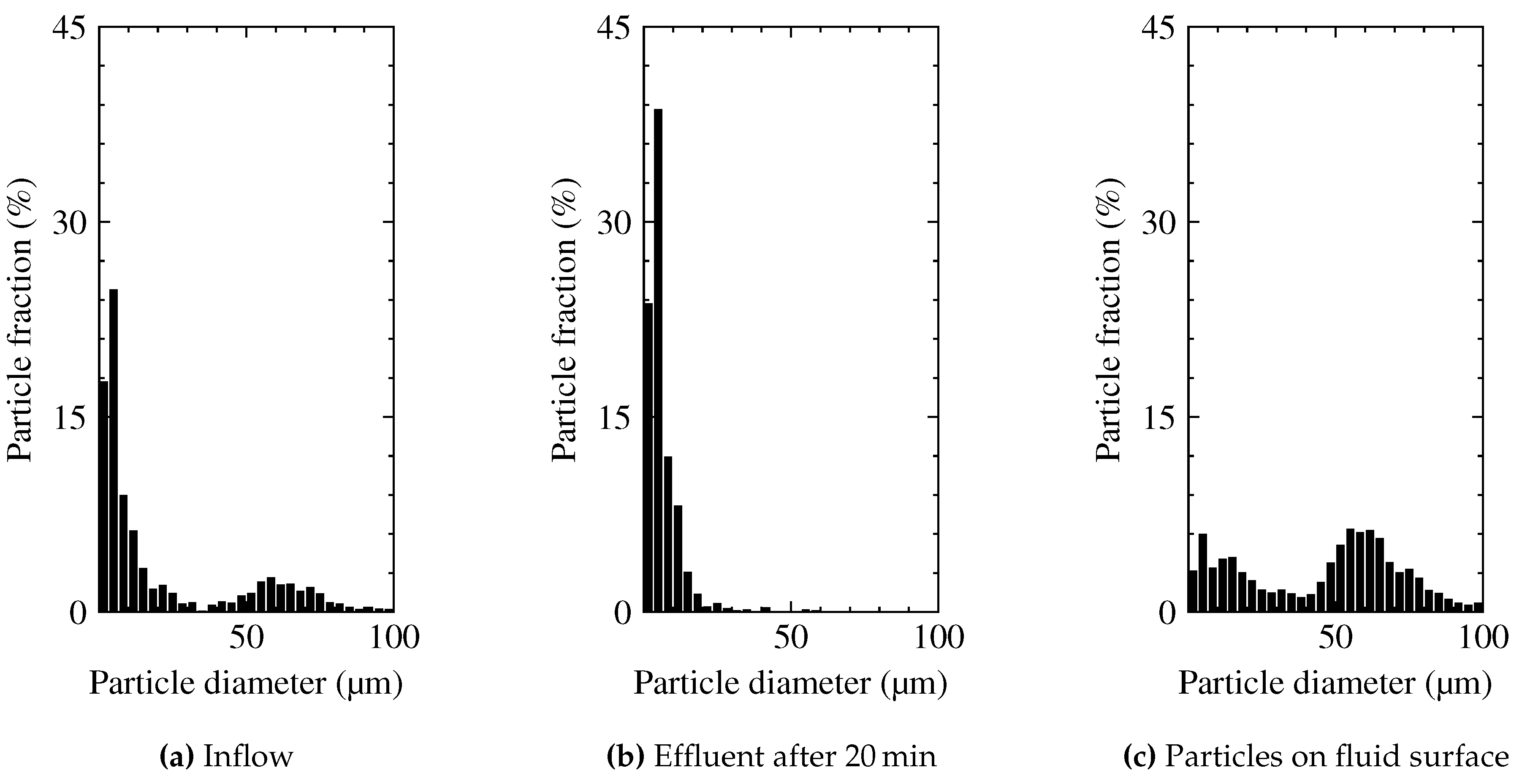
| Q | L min−1 | L min−1 | ||||
| 15 ppi | 20 ppi | 30 ppi | 15 ppi | 20 ppi | 30 ppi | |
| P = 30 | 0.91 | 0.78 | 0.75 | 0.76 | 0.72 | 0.64 |
| P = 10 | 0.83 | 0.52 | 0.46 | 0.19 | 0.31 | 0.31 |
| P = 0 | 0.14 | 0.35 | 0.28 | 0.14 | 0.08 | 0.23 |
| Q | L min−1 | L min−1 | ||||
| 15 ppi | 20 ppi | 30 ppi | 15 ppi | 20 ppi | 30 ppi | |
| P = 30 | + | + | + | + | + | |
| P = 10 | + | + | ||||
| P = 0 | + | + |
| Q | L min−1 | L min−1 | ||||
| 15 ppi | 20 ppi | 30 ppi | 15 ppi | 20 ppi | 30 ppi | |
| P = 30 | 98 | 96 | 99 | 97 | 95 | 92 |
| P = 10 | 96 | 97 | 90 | 83 | 83 | 79 |
| P = 0 | 95 | 89 | 97 | 95 | 87 | 89 |
Disclaimer/Publisher’s Note: The statements, opinions and data contained in all publications are solely those of the individual author(s) and contributor(s) and not of MDPI and/or the editor(s). MDPI and/or the editor(s) disclaim responsibility for any injury to people or property resulting from any ideas, methods, instructions or products referred to in the content. |
© 2023 by the authors. Licensee MDPI, Basel, Switzerland. This article is an open access article distributed under the terms and conditions of the Creative Commons Attribution (CC BY) license (http://creativecommons.org/licenses/by/4.0/).





